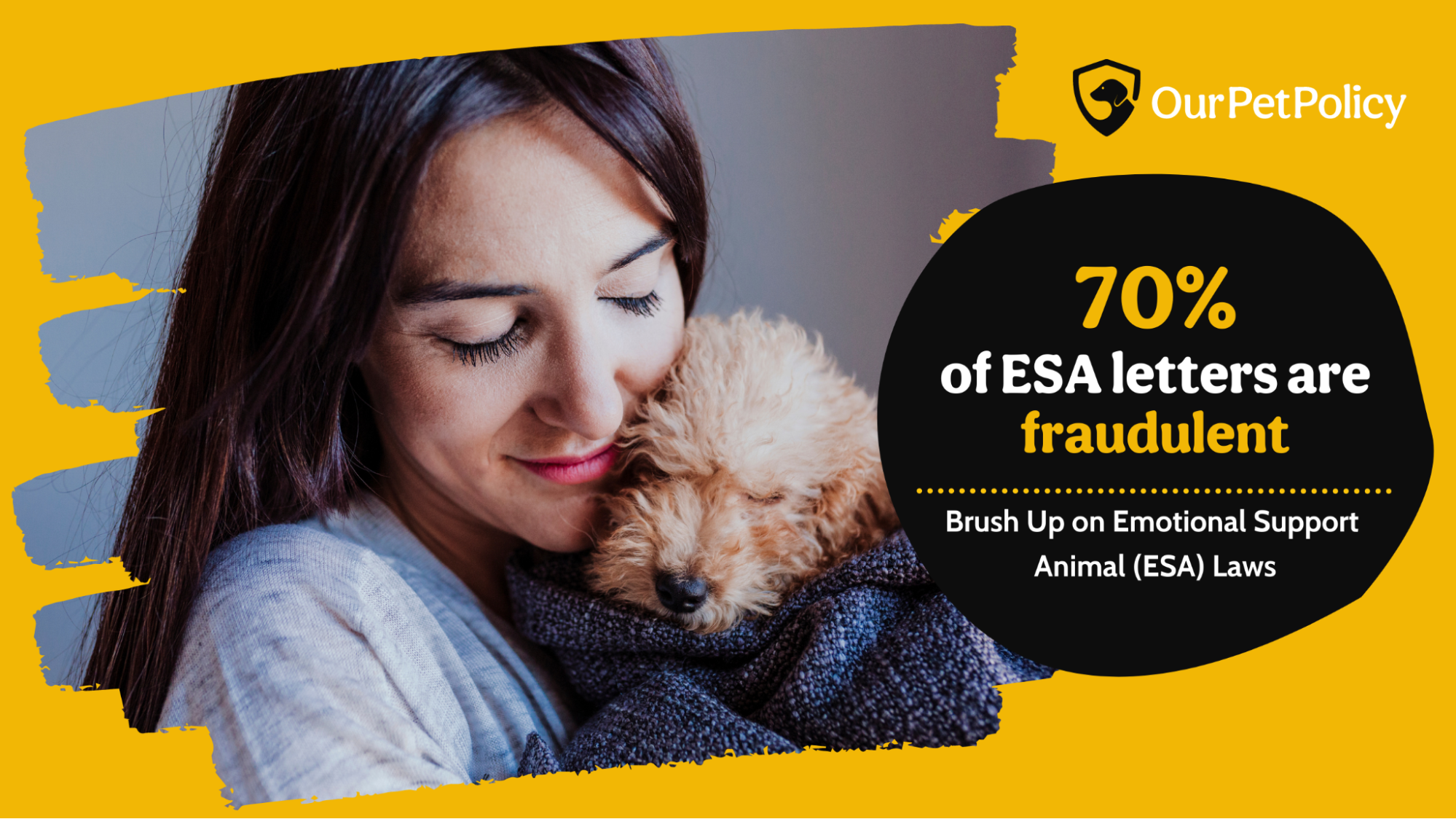A vast number of potential renters own pets and consider them part of the family. As a landlord, allowing pets in your properties widens the applicant pool and gives you a better chance of securing long-term, reliable tenants. However, it is also important that you safeguard your rental properties from pet damage. Doing so will save on repairs, extend the life of your property, and create a better renting experience for all of your pet-owning and pet-free tenants alike. Here are some tips on how to better protect your rentals that allow furry friends.

Install Durable Flooring
Spending a bit more for flooring that is durable, scratch-resistant, and damage resilient pays for itself in the long run. Cats and dogs are the number one choice for pets and both have a propensity to scratch and dig if improperly trained or supervised. Flooring your properties with vinyl planks, wood laminate, tile, or bamboo is an excellent choice. Not only do these types of flooring look great, but they are also easy to clean and repair and are scratch and damage-resistant. In the event that they do get damaged, replacing these flooring types — either in full or in a smaller section — is quick, easy, and affordable.
Avoid Using Carpet Whenever Possible
Carpets stain easily, hold on to odors, and take a lot of work to thoroughly clean. Oftentimes young or distressed pets can have accidents, resulting in stains or spots that are challenging or outright impossible to remove. When tenants have pets running around with untrimmed nails, carpets can easily snag, leaving those spots prone to early wear and tear. It is safe to say that carpet has a short lifespan. A short lifespan means frequent changes, higher costs, and more time spent replacing carpet between tenants.
Invest in Animal Relief Areas
Animals do better on established routines. Investing in a specific animal relief area that is easily accessible for frequent use can help their routine and provide an area for them to stretch their legs or socialize with other animals in the fresh air. This can be extremely effective in a pet’s overall happiness. Happy animals can mean fewer accidents, fewer complaints from neighboring tenants, and less headache for your maintenance staff dealing with pet waste problems. A dedicated relief and outdoor area for pets can be a great way to build a community! They also offer a great selling point for potential tenants who are checking out the space. And with more and more renters owning pets, this can set you apart from other rental properties in the area.
Consider Fake Grass or Turf
Fake grass or turf is easier to clean, maintain, and it lessens the tenant’s costs and efforts if you require lawn upkeep. Fake grass also helps eliminate the possibility of dogs digging holes in the dirt around your property. Overall, it can make the area look clean and pleasant without requiring extra upkeep.

Brush Up on Emotional Support Animal (ESA) Laws
The Fair Housing Act requires landlords to accommodate tenants with ESAs. Violating these laws can incur fines that can be in the thousands of dollars. However, studies have shown that an astonishing 70% of ESA letters are fraudulent. Always make it a part of your process to verify ESA letters to protect you and your business. If you are wary of verifying ESA letters due to the liability and risk associated with them or you’re questioning the legitimacy of the ESA letters you are receiving from your tenants, enlist the help of a service that specializes in these matters, such as OurPetPolicy.
Set Clear Expectations from the Start
Establish and set pet care requirements on your property from the get-go. Untrimmed nails on flooring and carpet are minor damages compared to many other potential situations that could occur while you are renting to a tenant with a pet or animal. From animal dander allergies to animal waste on common grounds or excessive noise, screening tenants and their pets and discussing your expectations before any lease signings is a must.
It’s important to note that despite precautions, 85% of property owners have, in one way or another, experienced pet damage. Reaching an agreement on maintenance expectations is very important for both parties. The annual average cost of pet damage caused by dogs is around $850. Seeing eye to eye on expectations and obligations regarding renting with pets is essential for a beneficial landlord-tenant relationship.

Establish and Enforce Your Pet Policy
Investing in a pet management solution that offers customizable pet policies, provides pet vaccination record management, verifies ESA letters, and helps reduce unauthorized pets on your property is the best way to protect your rental portfolio. Nine out of ten tenants with pets say pet policies play a role in deciding where to live, so ensuring you have a solid pet policy that protects both you and your tenants is a must.
If you are allowing pets in your rentals or find that you are accommodating more ESAs and service animals, having the right measures in place to protect your rental property from pet damage and providing the right kind of solutions to your tenants that recognize their needs only boosts your business and makes for a better place to live. Check out OurPetPolicy today to learn more and unleash your pawsibilities.
